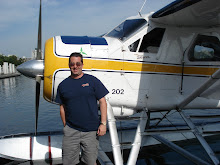Charles James 'Jimmy' Melrose 1913-1936

C.J. 'Jimmy' Melrose was born on 13 September 1913 at Burnside, Adelaide, only child of James Melrose and his second wife Hilda Westley, née Billing. While still at the Collegiate School of St Peter he joined the South Australian Yacht Squadron and took lessons with the Royal Aero Club of South Australia at Parafield, gaining his pilot's licence at 19. His widowed mother was his first passenger; he was influenced by her enthusiasm and by his English aviator uncle, Noel Pemberton Billing. Sir John Melrose was another uncle.
Jimmy purchased a DH Puss Moth fitted with a powerful 120 horsepower (89 kW) Gipsy Major engine. He named the plane 'My Hildergarde' and in August 1934 flew 8000 miles (12,875 km) solo around Australia, reducing the previous record by almost two days, to 5 days, 10 hours, 57 minutes. A skilful and courageous natural flyer, Melrose was tall, flaxen haired and blue eyed; while conforming to the popular ideal of a hero, he avoided lionization. He exercised seriously, swimming at Glenelg where he and his mother lived; he kept early hours, neither smoked nor drank alcohol and ate 'Oslo' lunches.
On his twenty-first birthday he left Parafield in the Puss Moth for England, reaching Croydon in a record 8 days, 9 hours. At Mildenhall he joined the Melbourne Centenary Air Race as the youngest entrant and, in spite of an emergency landing at Darwin, came third in the handicap and was the only solo flyer to finish. Awarded second prize of £500, he established a monoplane fund for the Aero Club of South Australia. In October 1934 he set a South Australian altitude record over Gulf St Vincent; two months later he made the first non-stop Adelaide-Tasmania flight, followed by a record time from Launceston to Sydney.
In January 1935 Melrose studied navigation and blind flying in England at the Air Service Training Centre, Hambling; returning to Australia in a new Percival Gull, he joined in the unsuccessful search for Sir Charles Kingsford Smith. His first accident involved a forced landing at Penrose, New South Wales. On recovering from injuries he went to England, bought a five-seater Heston Phoenix monoplane, and in April 1936 used it on a goodwill flight home to publicize South Australia's centenary; a crowd of 8000 greeted him at Parafield. Later he started air taxi work, once flying the premier to a country meeting.
On 5 July 1936 Jimmy began a charter flight from Melbourne to Darwin. Over South Melton, Victoria, in turbulent conditions with low visibility his Heston Phoenix broke up, killing both pilot and passenger, A. G. Campbell, D.S.O. The cause of the accident was established as structural failure. Australians joined Prime Minister Joseph Lyons, in mourning their 'chivalrous young knight of the air'. Funeral services were held simultaneously in Melbourne's and Adelaide's Anglican cathedrals. Schoolchildren lined the route from St Paul's to Springvale necropolis, as planes circled overhead. In Adelaide both Houses of parliament suspended their sittings and St Peter's Cathedral was packed, mainly with women, who had idolized Jimmy. Three Royal Aero Club Moths flew over as the service ended.


<< Home